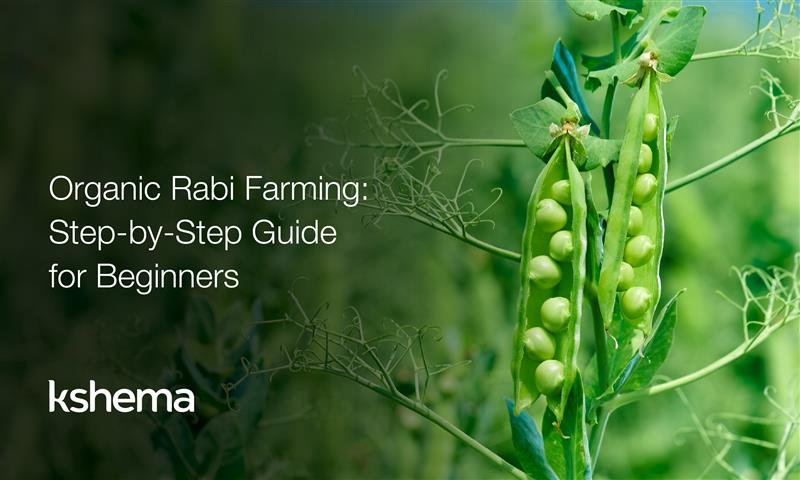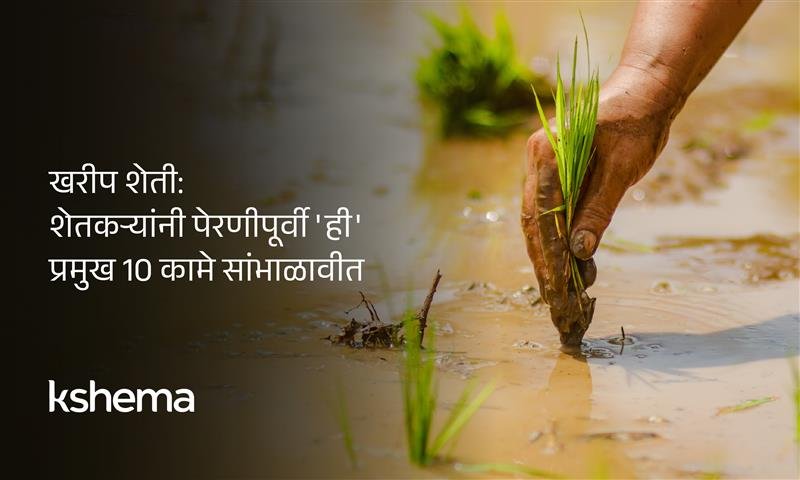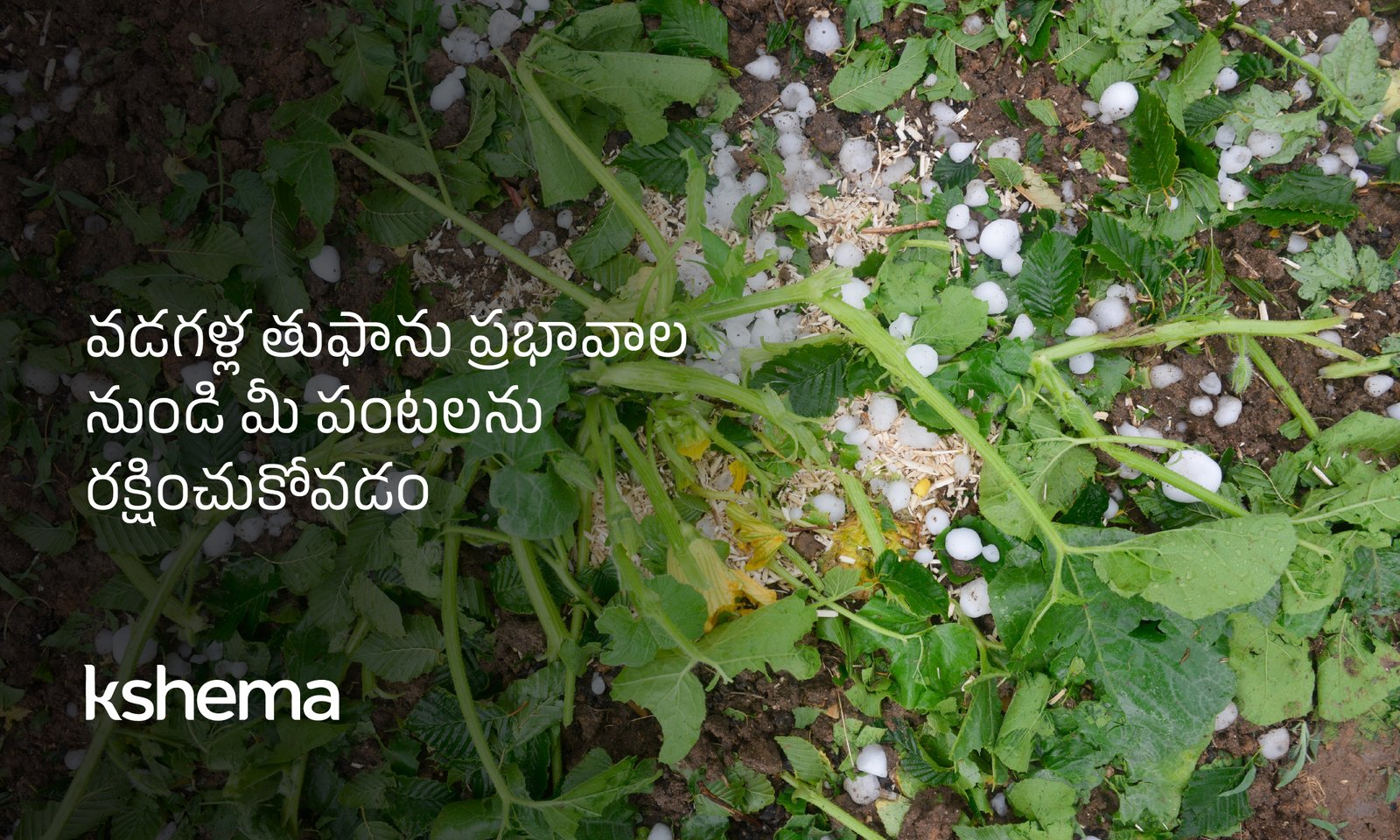7 Key Differences Between Kharif and Rabi Crops Farmers Must Know
Quick Summary:Kharif crops grow in the monsoon and depend on rainfall, while Rabi crops grow in winter with irrigation support. Their sowing time, climate needs and risk factors are different.
Introduction:
Kharif and Rabi crops are the backbone of Indian agriculture. Kharif crops grow during the monsoon season (June–October), while Rabi crops thrive in winter (October–March). Knowing these differences helps farmers plan sowing, irrigation, and crop protection better. Learn more about Kharif crop soil preparation and best Rabi crops for 2025. To safeguard your harvest, explore Kshema Sukriti and Prakriti crop insurance plans—customized for seasonal risks and available through the Kshema App.
Featured Snippet Answer
Kharif crops grow during the monsoon season (June–October) and depend on rainfall, while Rabi crops thrive in winter (October–March) with irrigation support. Their sowing time, climate needs, and risk factors differ, making seasonal planning and crop insurance essential for farmers.
What Are Kharif and Rabi Crops in India?
These are the two primary types of crops in India, each suited to different climatic conditions and farming practices. Kharif and Rabi refer to two major cropping seasons in India, each with its own set of crops, climatic conditions, and sowing and harvesting cycles.
Understanding the farming season in India helps farmers plan better and choose suitable crops for their region.
Kharif Crops
- Sowing Time: With the arrival of the southwest monsoon, typically June-July
- Harvesting Time: September to October
- Examples: Paddy (rice), maize, cotton, millets, groundnut, soybean, and pulses like urad and moong
Rabi Crops
- Sowing Time: After the monsoon ends, generally from October to December
- Harvesting Time: March to April
- Examples: Wheat, barley, mustard, peas, chickpeas (gram), oats, etc.
Both seasons play a vital role in ensuring food security in India and supporting the livelihoods of millions of farmers.
1. Climatic Needs of Kharif vs Rabi Crops
The biggest difference between Kharif and Rabi crops lies in their relationship with rainfall and temperature.
Kharif Crops:
- Thrive on monsoon rainfall
- Require warm and humid weather
- Susceptible to both too much and too little rain
- Irrigation is often unnecessary where rainfall is adequate
- Grow in cooler, drier climates
- Depend more on irrigation systems
- Cannot tolerate heavy rain during flowering or maturity
- Need clear, sunny weather for best results
Farmers must time their sowing and harvesting carefully based on the rainfall patterns and temperature conditions of their specific region.
2. Water Needs for Kharif and Rabi Crops
Kharif crops
Since they grow during the monsoon, they require more water, either from natural rainfall or supplementary irrigation in low-rainfall areas.
Rabi crops
Need less water compared to Kharif crops. Over-irrigation can harm them, especially during germination and flowering.
That’s why farmers are advised to use water-efficient irrigation techniques such as drip or sprinkler systems for Rabi crops.
3. Soil Preparation Tips for Crop Seasons
Soil type and preparation methods also vary for the two cropping seasons.
For Kharif crops:
- Soil should be well-drained to avoid waterlogging
- Organic matter retention is crucial
- Fertiliser use depends on rainwater leaching—excessive rain can wash away nutrients
For Rabi crops:
- Soil should have good moisture retention
- Often grown in loamy or clayey soils
- Fertiliser application can be more controlled and effective due to stable weather
Understanding these differences helps farmers make better decisions about crop rotation and land preparation.
4. Common Pests in Farming Seasons
Kharif and Rabi crops face different pest threats and knowing them can help farmers take preventive measures.
Kharif crops are vulnerable to pests like stem borers, armyworms, and aphids, particularly due to the high humidity. Common issues include:
- Stem borers in paddy
- Leaf spot diseases in groundnut
- Root rot and wilting in cotton
Rabi crops face threats from aphids, pod borers, and fungal diseases, especially when winter is prolonged. Common issues include:
- Aphid attacks in mustard and wheat
- Pod borers in gram
- Rust and powdery mildew in wheat
Proper timing of sowing, seed treatment, and crop rotation are effective strategies to prevent such issues.
5. Market Trends for Kharif and Rabi Crops
Market prices vary significantly between Kharif and Rabi crops, influenced by supply-demand patterns, seasonal availability, and procurement policies.
- Kharif crops often face price fluctuations due to oversupply or poor post-harvest storage conditions during monsoons.
- Rabi crops such as wheat and mustard typically receive strong government procurement support and may offer better price stability.
Staggered sowing and diversification can help farmers spread risk and take advantage of changing market dynamics.
6. Post-Harvest Tips for Kharif and Rabi Crops
Proper storage is critical to avoid post-harvest losses—especially since Kharif crops are harvested during or after the rainy season, making them more prone to moisture-related damages.
- Kharif produce must be dried thoroughly before storage to avoid fungal growth.
- Rabi harvests enjoy drier weather, making storage easier, though care must still be taken to avoid pest infestations.
In both cases, timely harvesting and investment in proper warehousing or local storage facilities can make a big difference in quality and returns.
7. Crop Insurance for Farming Seasons
Both Kharif and Rabi crops are prone to different perils. Understanding these risks allows farmers to choose the right crop insurance cover.
At Kshema General Insurance, we offer flexible and season-specific crop insurance policies like Kshema Sukriti, which allow farmers to:
- Choose the perils most relevant to their region and season
- Get covered for more than 100 crops
- Protect against risks like hailstorms, earthquakes, and more
- Pay only for the protection they need
For instance, a farmer growing paddy in the kharif season may want protection from flooding or inundation, while a wheat farmer in rabi may prefer coverage against hailstorm during harvest.
Customising your insurance according to the season, crop, and risk level is key to safeguarding your livelihood.
Kharif and rabi Difference are shown below
Summary: Kharif vs Rabi Crops at a Glance
| Aspect | Kharif Crops | Rabi Crops |
| Sowing Time | June – July | October – December |
| Harvesting Time | September – October | March – April |
| Water Needs | High (rain-fed) | Moderate to low (irrigated) |
| Climatic Preference | Warm, humid | Cool, dry |
| Examples | Rice, maize, cotton | Wheat, mustard, gram |
| Storage Needs | Drying is essential | Less moisture risk |
| Insurance Focus | Monsoon-related risks | Cold/dry weather-related risks |
FAQs About Kharif and Rabi Crops
1. What are Kharif crops?
Kharif crops are grown during the monsoon season (June–October) and depend on rainfall. Common examples include rice, maize, and cotton.
2. What are Rabi crops?
Rabi crops are cultivated in winter (October–March) and require irrigation support. Popular examples include wheat, mustard, and barley.
3. Which crops are grown in Kharif season?
Kharif season crops include rice, maize, jowar, bajra, and cotton. These crops thrive in warm temperatures and heavy rainfall.
4. Which crops are grown in Rabi season?
Rabi season crops include wheat, mustard, barley, gram, and peas. They grow best in cool temperatures with controlled irrigation.
5. How does crop insurance help during Rabi season?
Crop insurance protects farmers against losses caused by drought, frost, or pest attacks during Rabi season. Plans like Kshema Sukriti offer affordable coverage tailored to seasonal risks.







